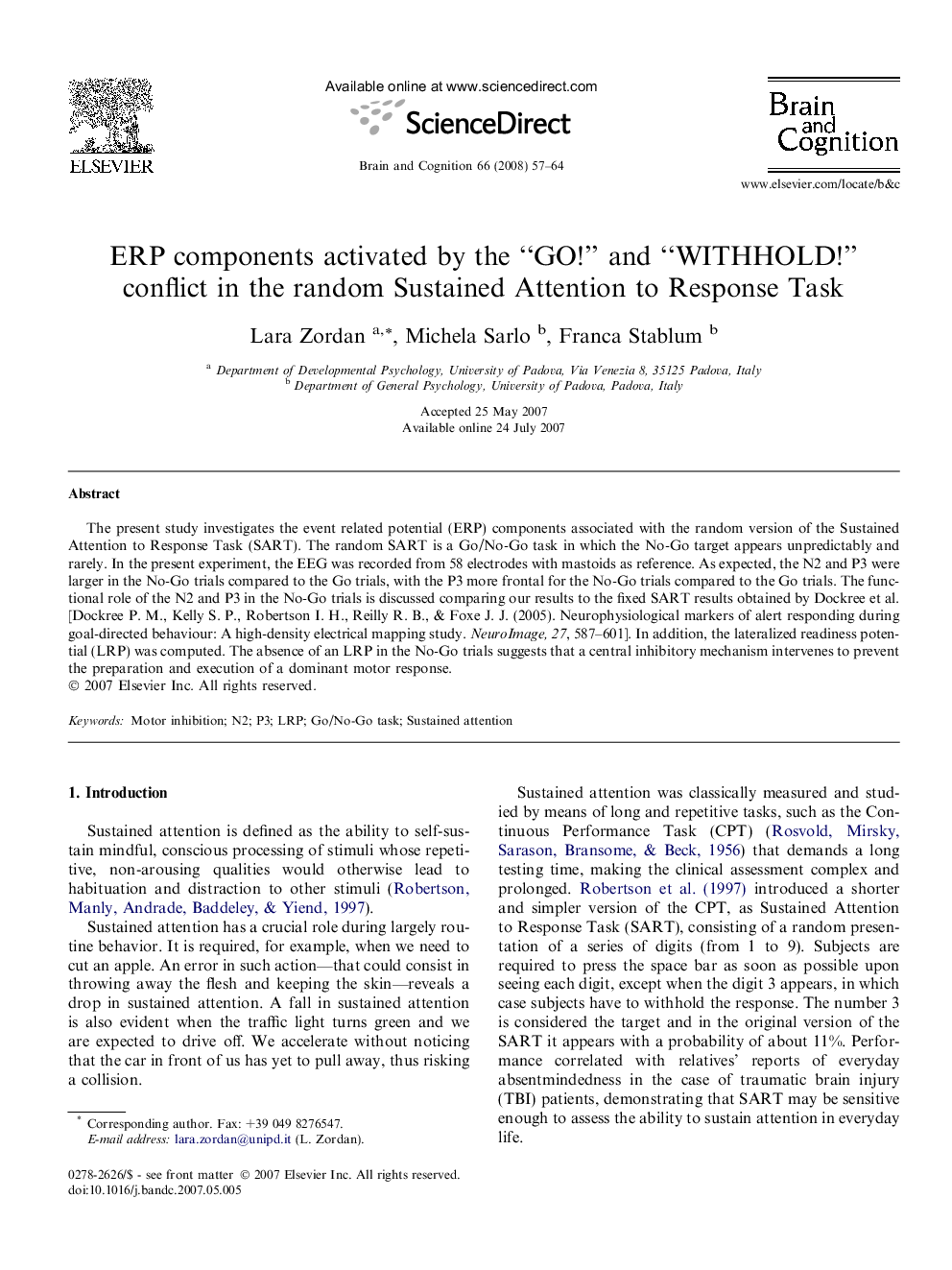| Article ID | Journal | Published Year | Pages | File Type |
|---|---|---|---|---|
| 924362 | Brain and Cognition | 2008 | 8 Pages |
The present study investigates the event related potential (ERP) components associated with the random version of the Sustained Attention to Response Task (SART). The random SART is a Go/No-Go task in which the No-Go target appears unpredictably and rarely. In the present experiment, the EEG was recorded from 58 electrodes with mastoids as reference. As expected, the N2 and P3 were larger in the No-Go trials compared to the Go trials, with the P3 more frontal for the No-Go trials compared to the Go trials. The functional role of the N2 and P3 in the No-Go trials is discussed comparing our results to the fixed SART results obtained by Dockree et al. [Dockree P. M., Kelly S. P., Robertson I. H., Reilly R. B., & Foxe J. J. (2005). Neurophysiological markers of alert responding during goal-directed behaviour: A high-density electrical mapping study. NeuroImage, 27, 587–601]. In addition, the lateralized readiness potential (LRP) was computed. The absence of an LRP in the No-Go trials suggests that a central inhibitory mechanism intervenes to prevent the preparation and execution of a dominant motor response.
